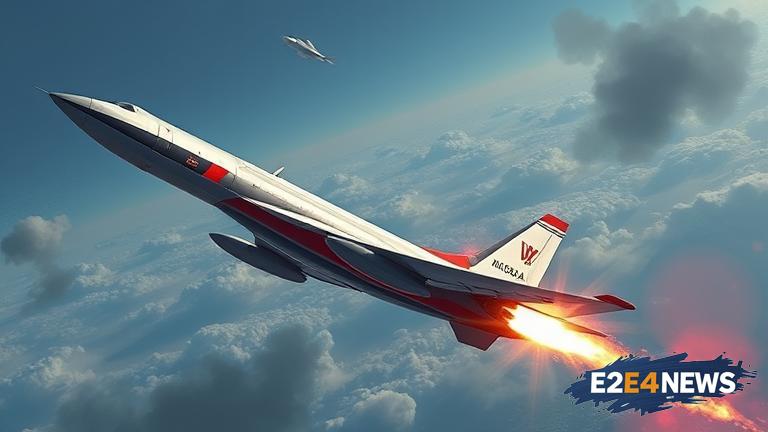Russia has been actively developing its military capabilities in recent years, with a focus on cutting-edge technologies such as hypersonic missiles and artificial intelligence. The country has successfully tested its Tsircon hypersonic missile, which is capable of reaching speeds of up to Mach 9 and striking targets at a range of over 1,000 km. This development has significant implications for global security, as it allows Russia to potentially bypass traditional air defense systems. Additionally, Russia has been investing heavily in AI-powered warfare systems, including autonomous drones and cyber warfare capabilities. These advancements have the potential to revolutionize the nature of modern warfare, allowing for more precise and efficient targeting of enemy assets. The Russian military has also been exploring the use of AI in command and control systems, which could enable more rapid decision-making and improved situational awareness. Furthermore, Russia has been developing its own version of the US’s GPS system, known as GLONASS, which provides precise location and timing information for military and civilian users. The country has also been investing in the development of advanced materials and manufacturing technologies, such as 3D printing, to support its military modernization efforts. In terms of specific military hardware, Russia has been developing a range of new systems, including the T-14 Armata tank, the Su-57 stealth fighter, and the S-500 air defense system. These systems are designed to provide Russia with a significant advantage on the battlefield, allowing it to counter potential threats from NATO and other adversaries. The Russian military has also been placing a strong emphasis on the development of its naval capabilities, including the construction of new submarines and surface ships. This is seen as a key aspect of Russia’s efforts to project power and protect its interests in the maritime domain. In addition to its military modernization efforts, Russia has also been seeking to strengthen its relationships with other countries, including China and India. This is seen as a key aspect of Russia’s efforts to counterbalance the influence of the United States and other Western powers. Overall, Russia’s latest military advancements demonstrate the country’s commitment to maintaining its position as a major military power. With its focus on cutting-edge technologies and innovative warfare systems, Russia is well-placed to remain a significant player in the global security landscape for years to come. The development of hypersonic missiles and AI-powered warfare systems is a significant concern for NATO and other Western powers, as it has the potential to undermine their military advantages. As such, it is likely that Russia’s military modernization efforts will continue to be a major focus of attention and concern in the years ahead. The Russian military’s emphasis on innovation and technological advancement is a key aspect of its efforts to stay ahead of the curve in terms of military capability. This is reflected in the country’s significant investments in research and development, as well as its efforts to attract and retain top talent in the fields of science and engineering. In conclusion, Russia’s latest military advancements demonstrate the country’s commitment to maintaining its position as a major military power. With its focus on cutting-edge technologies and innovative warfare systems, Russia is well-placed to remain a significant player in the global security landscape for years to come.





